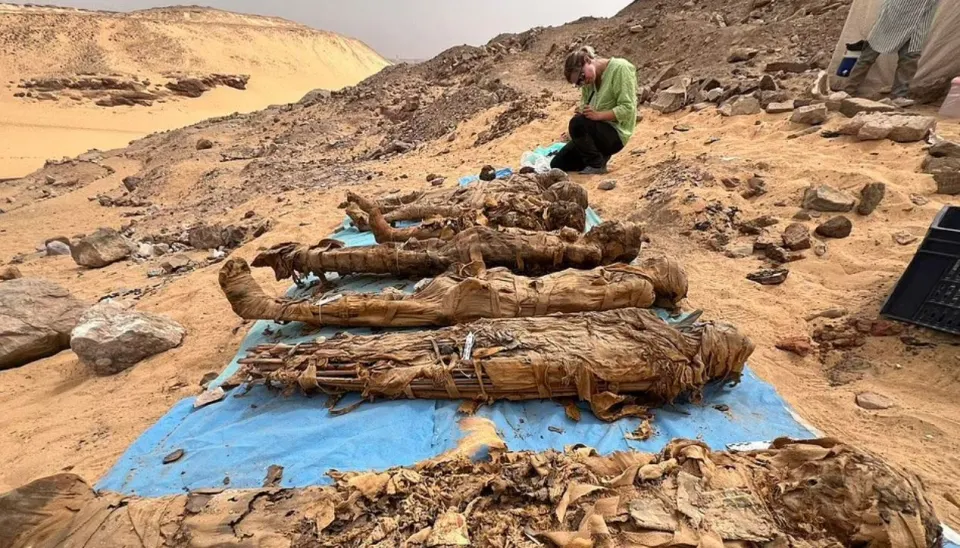In a remarkable archaeological find in Egypt’s Aswan, over a thousand mummies have been unearthed from a sprawling burial site known as ‘The City of the Dead.’ The site, situated on the east bank of the Nile River, spans millennia of history, with the tombs dating back as far as 600 BC to 200 or 300 AD. This ancient necropolis, initially established over 4,500 years ago, has yielded 36 new tombs in recent excavations.
Among the discoveries are tombs containing clusters of mummies, revealing insights into ancient Egyptian familial structures and burial practices. Notably, some tombs contained families, including children, shedding light on how these ancient Egyptians lived and died.
Archaeologists, using advanced imaging technologies like CT scans, reevaluated initial assumptions about relationships among the mummies, highlighting new familial connections within the burial chambers.

The excavation has also yielded important insights into the health and social structures of ancient Egyptian society. Mummies interred higher up the hill, identified as ‘elites,’ stand in stark contrast to those of the middle class buried at lower levels, revealing the stratified burial customs of the time.
Scientific examinations of the remains have revealed a prevalence of infectious diseases like tuberculosis, as well as evidence of bone disorders and indicators of malnutrition among many individuals.
This discovery not only enriches our understanding of ancient Egyptian life and death rituals but also has significant implications for modern scientific research. The study of these ancient illnesses could potentially inform medical advancements today, offering insights into the historical prevalence and impact of diseases that plagued ancient populations.
Plans are underway to further study and preserve these mummies, with the most well-preserved specimens destined for display in museums, ensuring their story is respectfully told and preserved for future generations.
As archaeologists continue to explore and document this vast burial complex, it promises to rewrite aspects of ancient Egyptian history, providing new narratives about the lives and deaths of these individuals who once inhabited this ancient city on the banks of the Nile.


